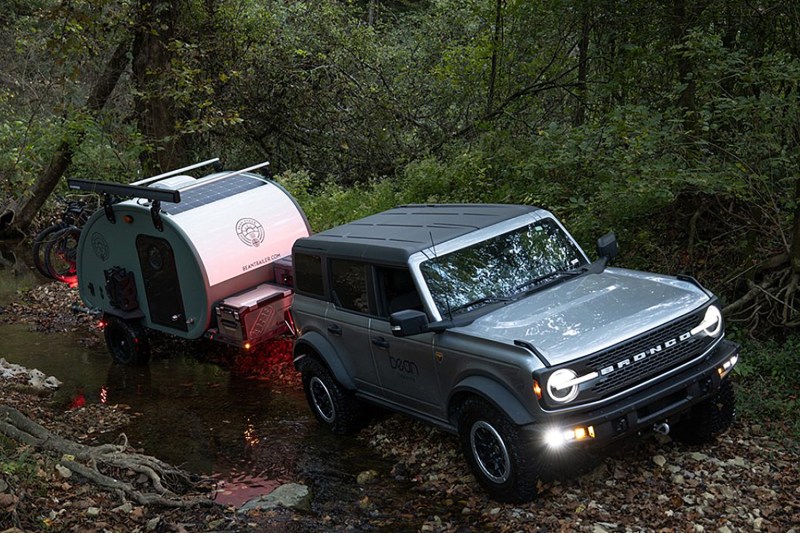
Custom van life vans and over-the-top overlanding rigs have stolen most of the public attention for anyone daydreaming about serious long-term road life. But those aren’t your only options. Teardrop trailers, for example, have been around for almost as long as vehicles could tow things. These ultralight travel trailers are designed for minimalists looking to explore the world with only the essentials. While most aren’t designed for hardcore off-road use, Bean Trailers doesn’t design “most” teardrop trailers. Case in point: Its all-new Bean Stock 2.0 is a rugged, featherweight design ready to go, well, pretty much anywhere you need it to—all for under $20K.

All about Bean Trailer’s all-new Bean Stock 2.0 teardrop trailer
Despite their compact appearance, many teardrop trailers are bulkier and heavier than they look, and most just aren’t built for spending any serious time off-pavement. The Bean Stock 2.0 tackles both of these issues with a seamless fiberglass shell that’s far lighter (less than 1,200 pounds!), more durable, and more leak-resistant than conventional “stick-built” (i.e., plywood and aluminum) teardrops. The design is purpose-built for even the roughest trails. Coupled with a slimmer, trail-friendly profile, it can readily be towed by most midsize and even compact SUVs, like Toyota RAV4s and Subaru Foresters.
Even the entry-level Bean Stock 2.0 without any options comes ready for off-road exploration, riding on a Timbren 2,000-pound HD suspension and 15-inch steel wheels with 27-inch radial all-season tires. Optional off-road upgrade packages include a 4-inch lift and beefy Falken Wildpeak AT3W 235/75R15 tires, providing more ground clearance for even greater trail-ready capability. The flagship upgrade package also adds a 3,500-pound suspension in case you plan to outfit the trailer with things like a rooftop tent, outdoor toys (think oversized kayaks or extra-large stand-up paddleboards), or a heavier custom interior.

Inside, the Stock 2.0 is equally well-equipped with plenty of comfort and convenience features, like a four-plus-inch mattress and an insulated ceiling with a soft-touch headliner. The interior is illuminated by wider-than-average windows (especially for a teardrop trailer) by day and dimmable, warm-tone recessed lighting after dark. For digital nomads, the entire rig comes with a Goal Zero Yeti portable power station and solar prewiring, allowing you to run off-grid almost indefinitely by just adding your own solar panels.

While even the entry-level model is handsome and well-equipped, we love the ability to dial in your exact level of customization. The exterior is available in more than a dozen colors, from standard Black and stark White to bolder options, like Flame Red and “safety cone” Orange. The interior laminate can likewise be customized with your preferred wood look. Plus, there’s a long list of other options, including accent lighting, gear racks, awnings, dual-zone portable refrigerators, rock sliders, and—well, you get the gist.

Build and customize your own Bean Stock 2.0 teardrop trailer
The Bean Stock 2.0 ultralight teardrop trailer is available now with a starting price of just $15,999. That’ll get you into a rugged, off-road-ready base model without all the “fixin’s.” Ticking all of the option boxes will easily push the all-in price above $20,000. But can you really put a price tag on being able to bring your bedroom, tech gadgets, and even a kitchen virtually anywhere you want?



